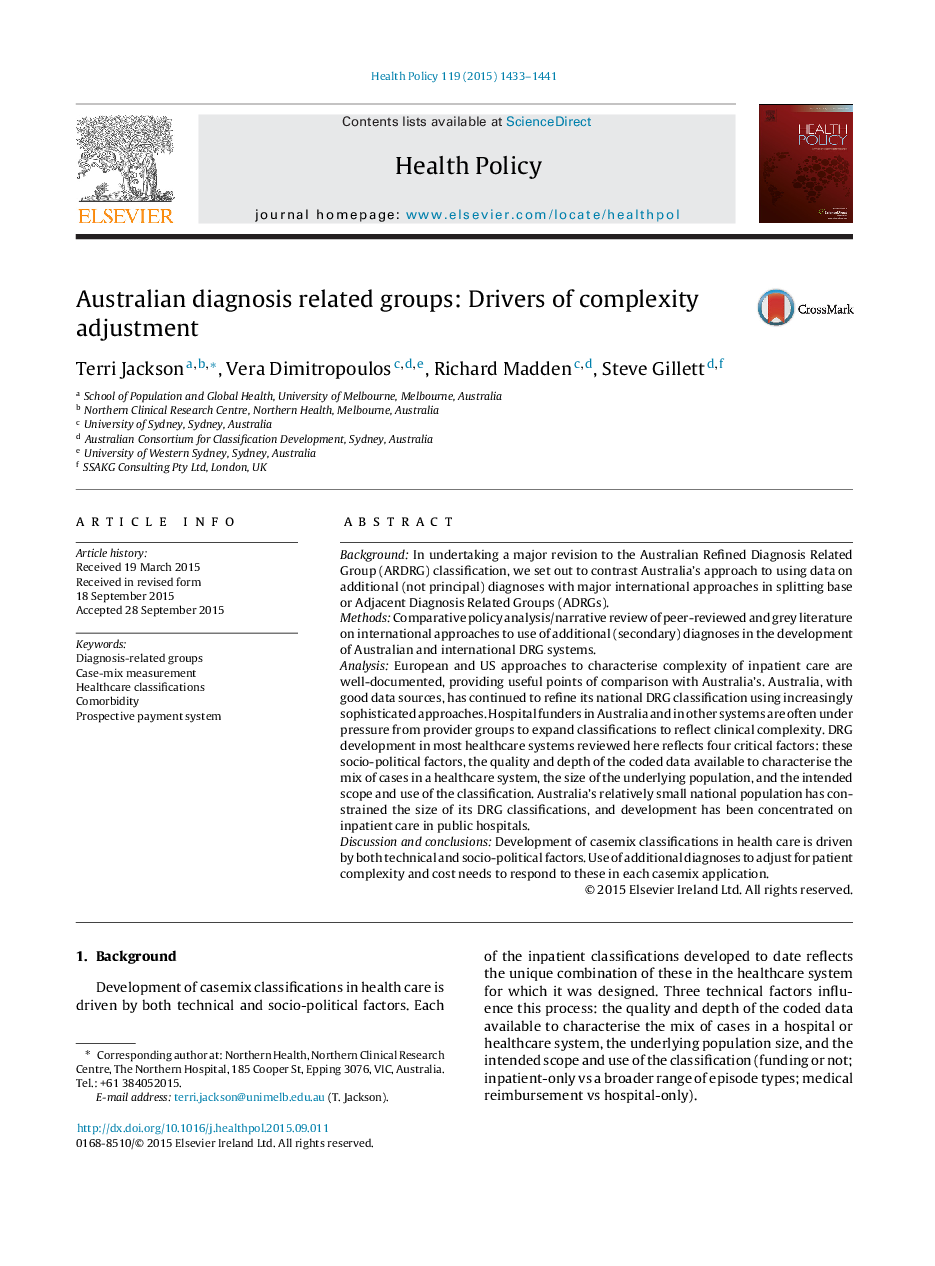| کد مقاله | کد نشریه | سال انتشار | مقاله انگلیسی | نسخه تمام متن |
|---|---|---|---|---|
| 6239084 | 1278985 | 2015 | 9 صفحه PDF | دانلود رایگان |
- Australia is developing a new approach for ARDRG-8 complexity adjustment.
- We review how Australian DRGs have used diagnoses to adjust for complexity.
- We review international approaches to complexity adjustment in DRG classifications.
- We describe the ways in which system-specific factors shape these approaches.
BackgroundIn undertaking a major revision to the Australian Refined Diagnosis Related Group (ARDRG) classification, we set out to contrast Australia's approach to using data on additional (not principal) diagnoses with major international approaches in splitting base or Adjacent Diagnosis Related Groups (ADRGs).MethodsComparative policy analysis/narrative review of peer-reviewed and grey literature on international approaches to use of additional (secondary) diagnoses in the development of Australian and international DRG systems.AnalysisEuropean and US approaches to characterise complexity of inpatient care are well-documented, providing useful points of comparison with Australia's. Australia, with good data sources, has continued to refine its national DRG classification using increasingly sophisticated approaches. Hospital funders in Australia and in other systems are often under pressure from provider groups to expand classifications to reflect clinical complexity. DRG development in most healthcare systems reviewed here reflects four critical factors: these socio-political factors, the quality and depth of the coded data available to characterise the mix of cases in a healthcare system, the size of the underlying population, and the intended scope and use of the classification. Australia's relatively small national population has constrained the size of its DRG classifications, and development has been concentrated on inpatient care in public hospitals.Discussion and conclusionsDevelopment of casemix classifications in health care is driven by both technical and socio-political factors. Use of additional diagnoses to adjust for patient complexity and cost needs to respond to these in each casemix application.
Journal: Health Policy - Volume 119, Issue 11, November 2015, Pages 1433-1441
